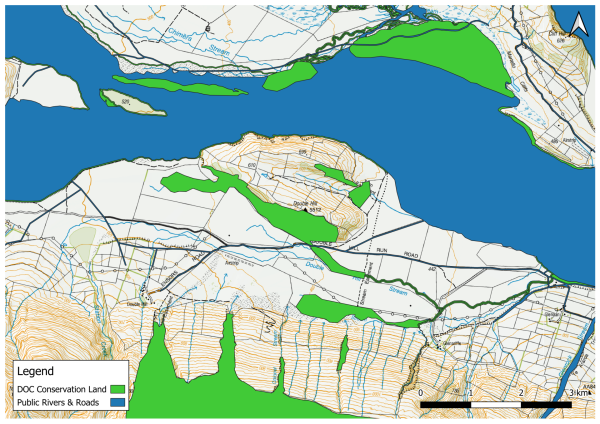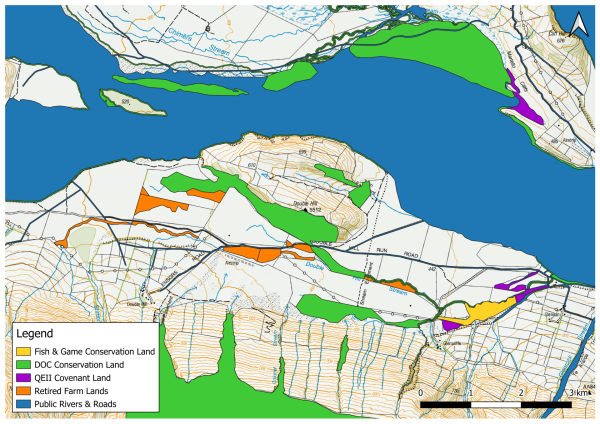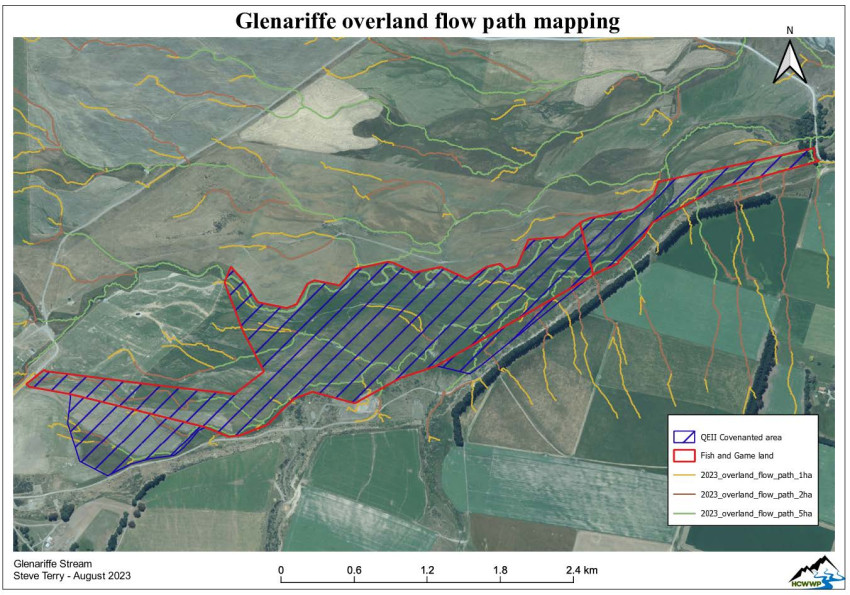
In collaboration with the landowners of Glenariffe Station, a restoration project is underway to re-naturalise and restore a 44-hectare wetland area located along the East Branch of Glenariffe Stream, part of the Rakaia River headwaters. As part of this effort, the North Canterbury Fish & Game Council (NCF&G) has acquired 30 hectares of land to facilitate the regeneration of the wetland, with an additional 14 hectares being retired by the landowner. These areas, which include a network of ephemeral waterways and small streams, are key to enhancing the wetland ecosystem. ECan wetland ecologists have mapped the area, identified the location of various wetland species, and planned ongoing monitoring to track the site's progress in the coming years.

Before North Canterbury Fish & Game Works
To ensure the land was purchased at a fair value, a formal land valuation was conducted, followed by a surveyor's report to subdivide the property and enable the issuance of a title for the purchased land. The project also required four resource consents to divert the South Branch of Glenariffe Stream back to its original course, reconnecting it with the East Branch, which now flows as the unified Glenariffe Stream.
For the past 70 years, the East Branch of Glenariffe Stream had been diverted into Double Hill Stream to drain the wetland now being restored. This diversion disrupted natural water flows, resulting in unsuitable conditions for adult spawning and juvenile fish rearing. The re-naturalisation of the stream course has significantly improved water flow in both Glenariffe and Double Hill Streams, creating a better habitat for stream life and supporting the overall health of the freshwater ecosystem.

Post North Canterbury Fish & Game Works
A bridge has been constructed over the newly diverted stream path, with ownership and ongoing maintenance responsibilities resting with the landowner. The area around the bridge has been landscaped, and plans are underway to plant native vegetation along various sections of the enhanced waterways, further improving habitat for the species we manage and the water quality.
As part of this restoration work, Karina Kelly, a master's student in Water Resource Management at the University of Canterbury, has been conducting research to study ecological changes along Glenariffe and Double Hill Streams. Her work, which follows a land-use gradient, aims to provide baseline data for monitoring the progress of the wetland restoration and predict future improvements following land retirement, fencing, and rewetting efforts. Karina has completed her fieldwork and is currently processing invertebrate samples, with her final report expected in mid-2024.
In addition, Canterbury University has captured LIDAR imagery of the upper Rakaia catchment, funded by the MfE through the HCWWP project. This data, which has been processed and stored by NCF&G, has expanded the scope of the project, enabling the capture of a larger geographic area than originally planned. The imagery and data will support higher-level research and analysis, such as flow modelling and further land protection efforts. This data has already been shared with Glenariffe and Double Hill Station owners, who are now using it to inform future conservation strategies. The data has also been instrumental in demonstrating to neighbouring landowners that the restored flow in the Glenariffe East Branch will not increase flood risks to surrounding properties.

The LIDAR image below is an example of how this data can be used to map flood flow pathways when the mainstem of the Glenariffe floods.